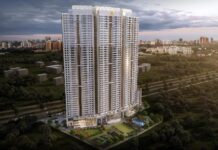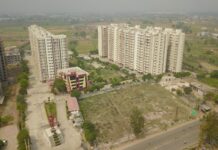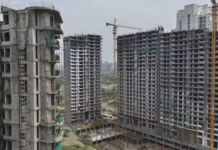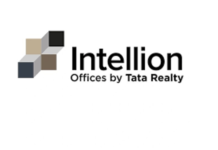Continued government support and stable performance augur well for Housing Finance Companies
New Delhi, July 13, 2017: As estimated in ICRA’s June 2017 report, the total housing credit growth slowed down to 16% in FY2017 from 19% in FY2016, with the overall housing credit standing at Rs. 14.4 trillion as on March 31, 2017 (Rs. 12.4 trillion as on March 31, 2016).
While the slowdown was across both HFCs and banks, the decline in the pace of growth of banks was higher – declining from 18% in FY2016 to 15% for FY2017 – largely because they were operationally tied up in H2FY2017 on account of demonetisation. The growth in the sector was also impacted by a slowdown in new project launches with buyers and investors deferring their home purchase decisions in expectation of a decline in real estate prices.
Mr. Rohit Inamdar, Senior Vice President and Group Head, Financial Sector Ratings, said, “HFCs operating in the affordable housing space, with a total portfolio of Rs 1.2 trillion, continued to grow at a faster pace of 28% in FY2017 compared to the industry. These HFC’s growth was supported by an increase in supply as affordable housing projects, the infrastructure status accorded to the sector and the improved borrower affordability supported by lower interest rates and capital subsidy through the credit-linked subsidy scheme. Traditional lenders that have historically focused on the prime segment have also started lending to this segment. ICRA expects affordable housing finance to continue to outpace the industry, going forward as well.”
HFCs’ asset quality remained comfortable with gross NPAs of 0.84% as on March 31, 2017. Smaller HFCs with a higher share of self-employed customers had reported an increase in gross NPAs in Q3FY2017 with borrower cashflows being impacted by demonetisation; the asset quality however improved in Q42017. “While the asset quality of HFCs has remained resilient across cycles, of late there has been an increase in the share of riskier sub-segments like non-housing loans, self-employed and affordable housing in the overall portfolio. Further, rising competitive intensity has led to some dilution in lending norms like relaxation of LTVs/FOIRs, increased loan tenures and ballooning of repayments which could impact asset quality indicators negatively over the medium term. Nevertheless, the strong monitoring and control processes of HFCs, borrowers’ own equity in the properties and the large proportion of the properties being financed for self-occupation especially in the affordable segment mitigate the concerns to an extent. Overall, ICRA expects HFCs’ gross NPAs to remain range bound between 0.9% and 1.3% for FY2018”, Mr. Inamdar added.
Large HFCs continued to rely more on debt market instruments and fixed deposits for meeting their funding requirements. While bank borrowings and debt market instruments continued to account for a sizeable share of the overall funding for small HFCs, these entities were also able to draw substantial NHB funding. Cost of funds for HFCs overall moderated from 8.48% in Q3FY2017 to 8.08% in Q4FY2017 owing to softening of interest rates and the higher share of debt market borrowings. With many HFCs raising funds at median rates of 7.5-8% currently, ICRA expects the cost of funds for HFCs to moderate further in Q1FY2018.
HFCs’ reported capital adequacy remained comfortable, given the relatively lower risk weights for home loans and commercial real estate loans for residential projects. Overall HFC gearing level remained at around 8.1 times as on March 31, 2017. “Since the reduction in risk weights for higher ticket sizes is only applicable for incremental disbursements made after June 7, 2017 , limited relief on regulatory capital adequacy is expected. The National Housing Bank (NHB) is also likely to issue a circular to HFCs.There could however be an increase in balance transfers as the lower risk weights are only applicable on fresh disbursements made post June 7, 2017,” Mr. Inamdar added.
HFCs continued to report good profitability with a return on equity of 19.8% in FY2017 (20% for FY2016) supported by the rising share of higher yielding non-housing loans and the lower cost of funds. Mr. Inamdar said, “Despite being supported by the rising share of higher yielding non-housing loans, the lower incremental lending rates in the home loan segment are likely to result in the net interest margins of HFCs shrinking by 10-15 bps in FY2018. The lower standard assets provisioning on incremental disbursements could offset the increase in credit provisions from non-housing loans. Overall, ICRA expects a 5-10 bps reduction in profitability (PAT/ATA) for HFCs in FY2018. Nevertheless, ICRA expects HFCs to report good returns (ROE of 17-19%) for FY2018”.
Corporate Comm India(CCI Newswire)



















